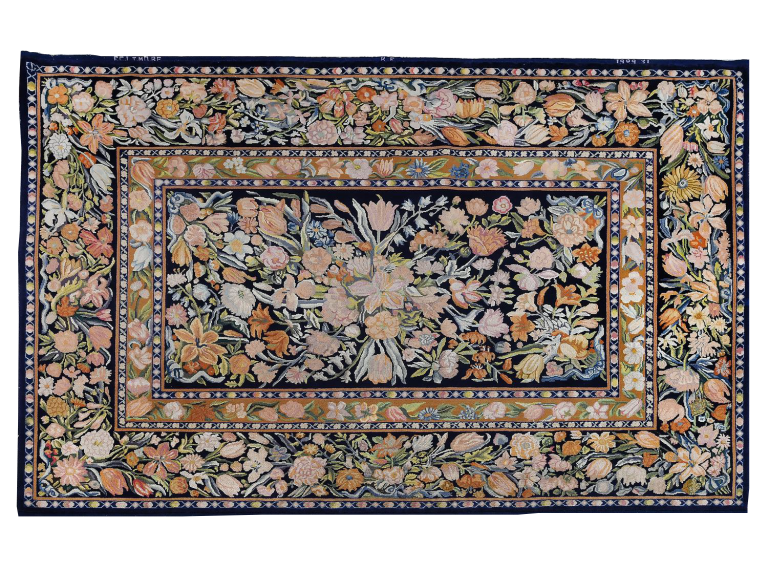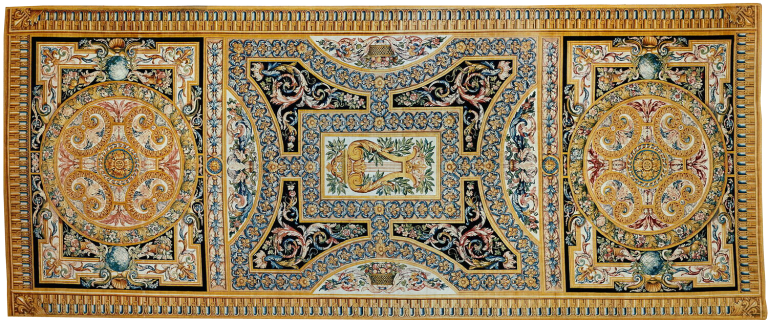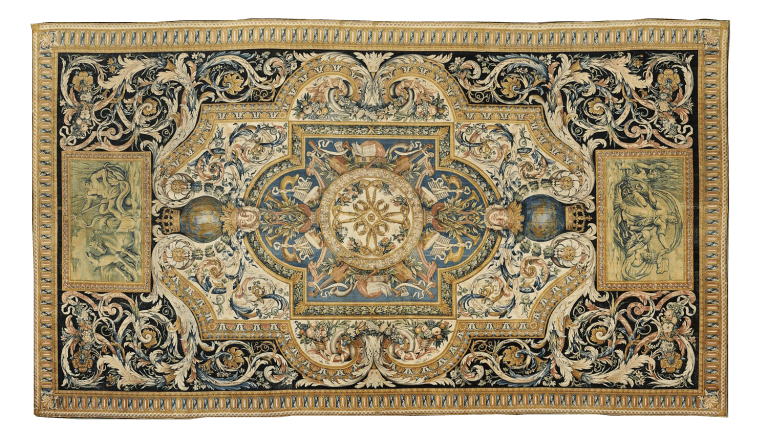The productions of the Savonnerie manufactory in the 17th century
The beginnings of a Parisian carpet manufactory under Henri IV and Louis XIII
In 1604, Pierre Dupont obtained a royal privilege (confirmed in 1608) and set up a knotted-stitch carpet factory “Persian and Levant style” in the galleries of the Louvre Palace, alongside other artisans benefiting from the support of the Crown.
Thanks to the protectorate of the regent Marie de Medici then of Louis XIII, a former apprentice of the Louvre factory named Simon Lourdet in turn settled in an old soap factory on the hill of Chaillot. Its location corresponds to the current Palais de Tokyo in the 16th arrondissement of Paris. The original function of the building explains this disconcerting name for a weaving technique.

The joint work of these two workshops produced carpets in the so-called Louis XIII style, inspired by oriental models with compositions including relatively fine light-colored borders and a field with floral decoration sprinkled on a black background.

The royal Savonnerie manufactory, the turning point of the 1660s
In 1663, Jean-Baptiste Colbert, financial intendant of Louis XIV, reorganized the carpet factory : he attached it to the superintendence of the King’s Buildings, Arts and Manufactures and placed it under the artistic direction of Charles Le Brun, First Painter to the king, director of the Academy of painting and sculpture and the Gobelins factory.
The now royal Savonnerie manufactory produced monumental carpets for royal residences and diplomatic gifts which spread the taste for French decorative art in foreign courts. In 1671, the two workshops were united in Chaillot.
Two projects still make the Savonnerie famous today :


These masterpieces, whose iconography aims to glorify the personality of the King and the power of his kingdom, deploy an architectural composition specific to the artistic direction of Charles Le Brun. Indeed, the compartments which organize the overall structure of the carpets in the Galerie d’Apollon recall the organization of the ceilings. They alternate between brown and ivory backgrounds in a striking contrast. An essential ornament of the manufactory, large colored acanthus leaves unfold across the field of the carpet.
More than thirty pieces are preserved intact at the Mobilier National, three are visible in the Sully wing of the Louvre Museum and many of them were dispersed by merchants, often recut and modified over the centuries.
Sources :
- Chantal Gastinel –Coural, Les tapis du pouvoir : La manufacture de la Savonnerie dans la première moitié du XIXème siècle. Editions Faton, Dijon, 2020.
- Thierry Sarmant (directeur de publication), Créer pour Louis XIV : Les manufactures de la Couronne sous Colbert et Le Brun. Silvana Editoriale S.p.A., Milan, 2019.
- The Mobilier National website https://www.mobiliernational.culture.gouv.fr/fr/nous-connaitre/les-manufactures/manufacture-de-la-savonnerie
Links to the collections of the Louvre Museum and the Mobilier National :
